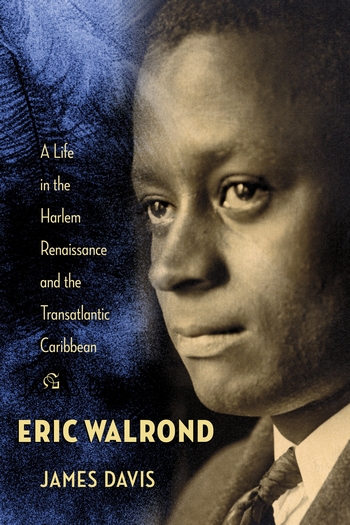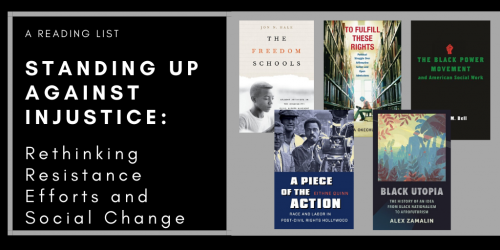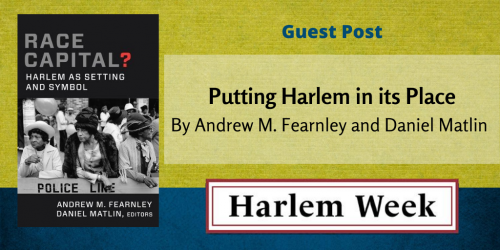#TurnItUp Neighborhoods: New York, Brooklyn, and Harlem’s People, Places, and History

Think university presses only publish monographs and textbooks? Think again. University presses can play a critical role in publishing books about the cities and regions in which we reside. In light of #TurnItUp Neighborhood, today’s post features excerpts from some of our newest and most poplular publications about New York and its neighborhoods.
When Did the Statue of Liberty Turn Green?
And 101 Other Questions About New York City
The Staff of the New-York Historical Society Library, Nina Nazionale, and Jean Ashton. Foreword by Ric Burns
In When Did the Statue of Liberty Turn Green? the staff of the New-York Historical Society Library answer more than a hundred of the most popular and compelling queries. The endlessly entertaining entries in this book feature hard-to-find data and unforgettable profiles, sharing snapshots of New York’s secret history for all to enjoy
The Con Men
Hustling in New York City
Terry Williams and Trevor B. Milton
The Com Men is a hard-edged guide to New York City swindles, street life, and culture, through direct interviews with con artists and hustlers. This work offers a new take on structure and opportunity, showing how the city’s unique urban and social architecture lends itself to the perfect con.
Lust on Trial
Censorship and the Rise of American Obscenity in the Age of Anthony Comstock
Amy Werbel
Amy Werbel provides a colorful journey through professional censor Anthony Comstock’s career that doubles as a history of post-Civil War America’s risqué visual and sexual culture. Lust on Trial provides fresh insights into Comstock, the sexual habits of Americans during his era, and the complicated relationship between law and cultural change.
In Pursuit of Privilege
A History of New York City’s Upper Class and the Making of a Metropolis
Clifton Hood
Extending from the 1750s to the present, In Pursuit of Privilege recounts upper-class New Yorkers’ struggle to create a world guarded against outsiders. Clifton Hood shows elites’ part in the larger story of the city through class conflict and their role in New York’s cultural and economic foundations. In this excerpt, Clifton Hood describes the impact of the Draft Riots in New York City during the Civil War.
A Time to Stir
Columbia ’68
Edited by Paul Cronin
For seven days in April 1968, students occupied five buildings on the Columbia University campus. A Time to Stircaptures the reflections of those who participated in and witnessed the Columbia rebellion with more than sixty essays that shed light on the politics, passions, and ideals of the 1960s and the complicated legacy of the uprising.
“Do You Have a Band?”
Poetry and Punk Rock in New York City
Daniel Kane
During the late 1960s, throughout the 1970s, and into the 1980s, New York City poets and musicians played together, published each other, and inspired one another to create groundbreaking art. In “Do You Have a Band?”, Daniel Kane reads deeply across poetry and punk music to capture this compelling exchange and its challenge.
International Express
New Yorkers on the 7 Train
Stéphane Tonnelat and William Kornblum
The 7 train is a microcosm of a specifically urban, New York experience, in which individuals from a variety of cultures and social classes are forced to interact and get along with one another. For newcomers to the city, mastery of life in the subway space is a step toward assimilation into their new home.
Smarter New York City
How City Agencies Innovate
Edited by André Corrêa d’Almeida
This book explains how innovation from within city agencies and administrations makes urban systems smarter and shapes life in New York City. With case studies challenge the tech-centric view of innovation, Smarter New York City brings together a multidisciplinary and integrated perspective to imagine new possibilities from within city agencies.
A History of Brooklyn Bridge Park
How a Community Reclaimed and Transformed New York City’s Waterfront
Nancy Webster and David Shirley
This book recounts the grassroots effort to transform Brooklyn’s defunct piers into an urban oasis. The story of Brooklyn Bridge Park also speaks to larger issues confronting all cities, including the development of postindustrial spaces and the ways to balance public and private interests without sacrificing creative vision or sustainable goals.
A Coney Island Reader
Through Dizzy Gates of Illusion
Edited by Louis J. Parascandola and John Parascandola
Featuring a stunning gallery of portraits by the world’s finest poets, essayists, and fiction writers–including Walt Whitman, Stephen Crane, José Martí, Maxim Gorky, Federico García Lorca, Isaac Bashevis Singer, E. E. Cummings, Djuna Barnes, Colson Whitehead, Robert Olen Butler, and Katie Roiphe–this anthology is the first to focus on the unique history and transporting experience of a beloved fixture of the New York City landscape.
Race Capital?
Harlem as Setting and Symbol
Edited by Andrew M. Fearnley and Daniel Matlin
Leading scholars consider crucial aspects of Harlem’s social, political, and intellectual history, its artistic, cultural, and economic life, and its representation across an array of media and genres. Race Capital? models new Harlem scholarship that interrogates exceptionalism while taking seriously the importance of place and locality.
Eric Walrond
A Life in the Harlem Renaissance and the Transatlantic Caribbean
James Davis
The first biography of a fascinating Caribbean-born writer, unraveling the mystery behind his disappearance from New York at the end of the Harlem Renaissance and recognizing his contribution to the New Negro movement beyond Harlem.
Down the Up Staircase
Three Generations of a Harlem Family
Bruce D. Haynes and Syma Solovitch
In Down the Up Staircase, Bruce D. Haynes and Syma Solovitch trace the social history of Harlem through the lens of one family across three generations, connecting their journey to the historical and social forces that transformed Harlem. This story is told against the backdrop of a crumbling three-story brownstone in Sugar Hill.
Race and Real Estate
Conflict and Cooperation in Harlem, 1890-1920
Kevin McGruder
Through the lens of Harlem real estate transactions from 1890 to 1920, Kevin McGruder reveals the complex interactions between whites and African Americans at a critical time of migration and development. He offers an innovative perspective on Harlem’s history and identity as both an African American and a biracial community.
Categories:Book ExcerptNew York CityUniversity Press NewsUrban Studies
Tags:“Do You Have a Band?”7 TrainA Coney Island ReaderA History of Brooklyn Bridge ParkA Time to StirAmy WerbelAndré Corrêa d'AlmeidaAndrew M. FearnleyBruce D. HaynesClifton HoodDaniel KaneDaniel MatlinDavid ShirleyDown the Up StaircaseEric WalrondIn Pursuit of PrivilegeInternational ExpressJames DavisJean AshtonJohn ParascandolaKevin McGruderLouis J. ParascandolaLust on TrialNancy WebsterNew-York Historical Society LibraryNina NazionalePaul CroninRace and Real EstateRace Capital?Ric BurnsSmarter New York CityStéphane TonnelatSyma SolovitchTerry WilliamsThe Con MenTrevor B. MiltonTurnItUPWhen Did the Statue of Liberty Turn Green?William Kornblum






